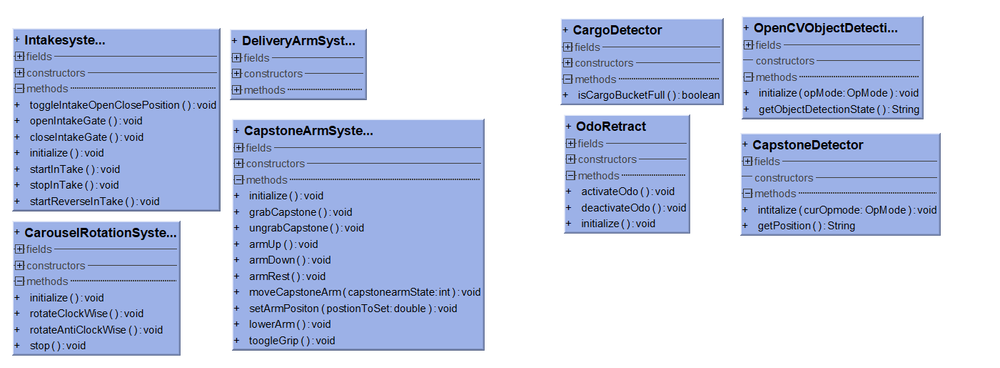Fright Frenzy Robot Challenge
Our 2021-2022 Robot
Below are image of our current robot for this season.
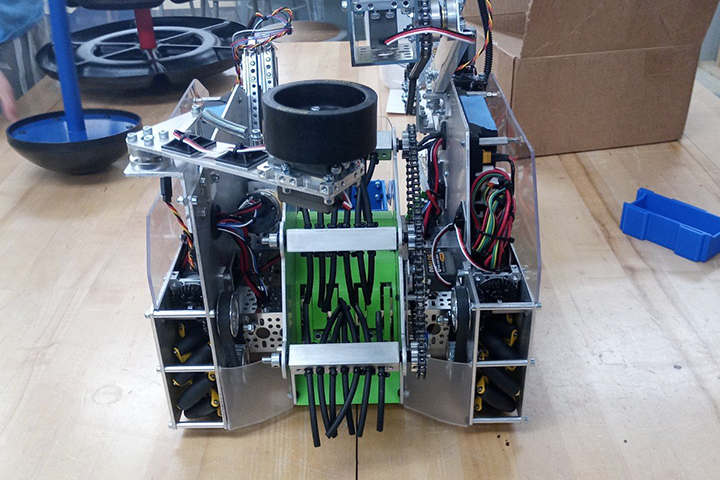
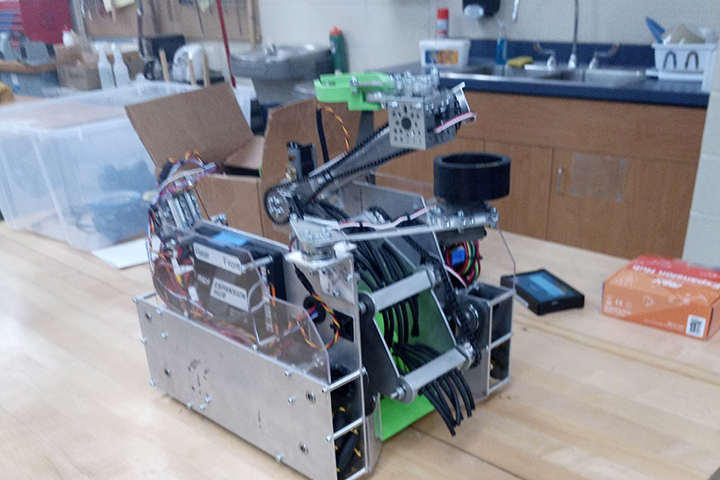
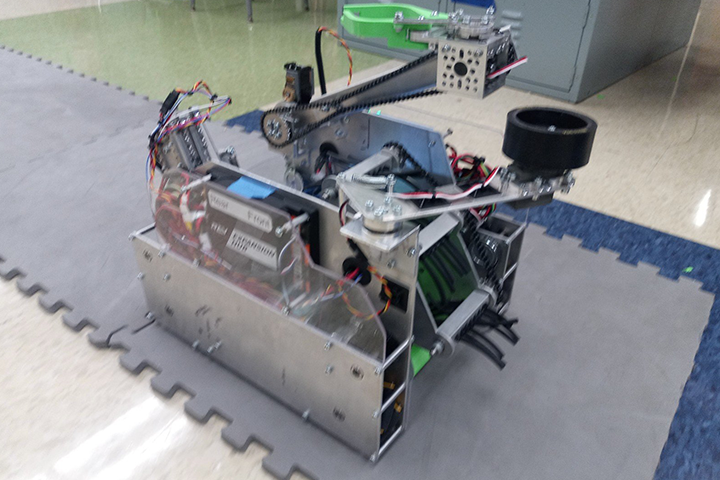
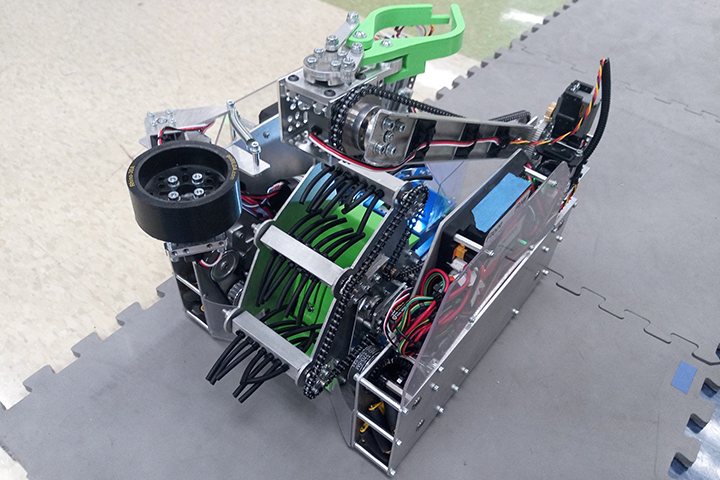
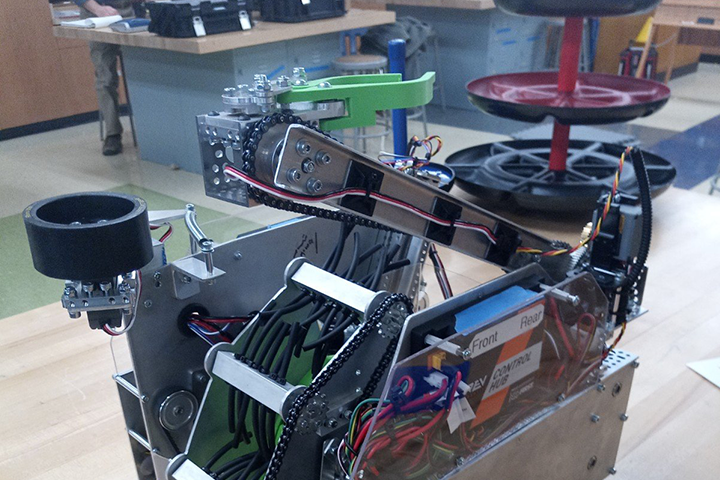
Our Main Robot Parts
We have 6 main robot parts, that are vital to the entire production.
Outake Overview
The outtake system of our robot is a key component of it and the competition, as it will allow us to move various types of freights into the various objectives scattered around the playing field. It is made up of a 3D printed bucket, a spring, a motor, and various standard aluminum parts that were used as an “elevator” to lift the bucket. The whole thing was lifted up and down by using a pulley system with a rope, which is rotated by the motor, moving the bucket and everything else. Additionally, the bucket also contains a clear-plastic guard, which will keep parts from flying out of the bucket when flown out of the intake, and will help to guide the cargo into the designated locations.
Pulley/Elevator
The pulley system is a key component of the outtake, as it is responsible for the lifting of the bucket, thus elevating the cargo. At its core, there is a plastic pulley attached to a servo at the base. When it is spun, the rope increases tension and pulls through each of the pulleys attached to the metal parts that slide past each other. This motion can be stopped at varying levels, which is useful in delivering cargo to different heights. Once at its designated position, the cargo can be delivered, but the elevator system must be able to retract. This is achieved by a spring tensioner, which helps to pull the entire system back together once the action is completed.
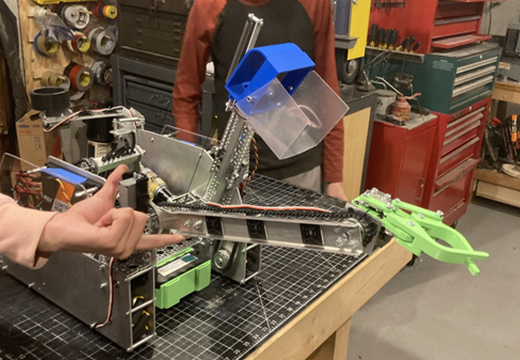
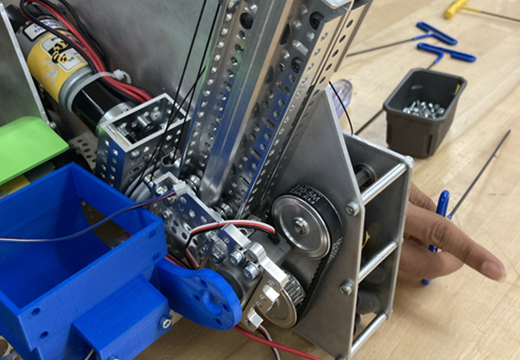
Duck Spinner
General Description: The duck spinner is a rotating wheel mounted onto the robot via a bearing, spacer and some screws. An arm is on this bearing, and holds the spinner in front of the robot. The wheel on top has a grippy outer layer, making it an ideal surface to grip the duck platform with. In addition, there is also a spring tensioner that holds the arm forwards, and that also allows it to safely apply weight when spinning the duck platform. To rotate the wheel, a motor is used.
Extra Detail: The wiring for the motor was done by channeling the wires down the arm with zip ties to connect them to the control hub.
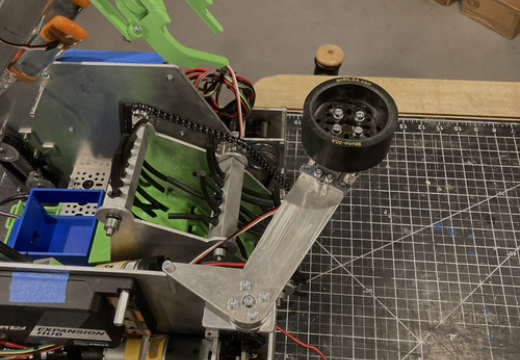
Bucket Tool
The bucket is 3D printed out of plastic and is used to hold and dump cargo (along with a clear plastic guard to prevent the cargo from flying out). The bucket is lifted and lowered by the pulley/elevator system, which allows it to dump cargo in designated areas. Once in position, a servo turns the bucket, which causes the cargo to smoothly slide out into the designated location. Inside the bucket, there is also a color sensor, which will tell the robot when there is an object inside it. This will be extremely helpful during the autonomous mode, as it will force the intake to not supply any new cargo pieces to the bucked, as it is against the rules to hold more than one object at a time.
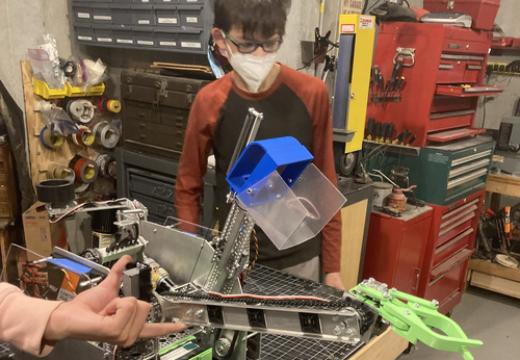
The Intake System
The intake is one of the main components of our robot. It helps us collect the freight and game elements. It consists of two custom-made, aluminum side plates, and a 3D printed ramp. The intake uses three rows of O-ring material, spun by a (insert gear ratio here) motor. To address the constraint of only picking up one freight at a time, our intake design also incorporates a physical limit/barrier that only prevents one game element on the robot.
Intake Stop System
We designed a stop system in our intake system, to address the constraint of only picking up one freight at a time. The stop system is made out of 3D printed “finger stops” that slot into the ramp when not used. The stops are attached on an axle, connected to a servo. The servo uses an offset lever arm that turns the axle, and flips the stops up and down. Another feature that helps us control the intake is a color sensor in the “dump bucket”. As soon as a freight is taken in, the color sensor’s input changes from blue to yellow, which then will shut off the intake motor, and raise the stopper. This helps us control our intake during autonomous and even in tele-op.
Capstone Arm and Other Arms
General Description: The capstone arm is the arm that is used to grab our team’s capstone and lift it onto one of the cargo bays. The arm is an aluminum sheet that is attached with 2 bolts to a 26:1 gear servo. On the arm, there is also a “grabber” that is used to grip the bottom of a rung that was added to the capstone. Because of this purpose, the arm is extremely important, and would allow for us to gain an advantage in competitions. The Servo/Aluminum Arm: The servo and aluminum arm are the “base” of the capstone system. The servo is simply wired directly into a control hub, and is used to move the arm forward and back. The aluminum arm is bolted to a small extension attach to the servo, and is long enough to deposit our capstone on a cargo bay.
The Grabber-Arm: This is the arm responsible for grabbing the capstone, and is just as important as the arm. The grabber-arm contains a servo, which when activated will cause the arm to open/close, as small aluminum clips force the 3D-printed arm into different positions. Finally, there is also a chain that is responsible for keeping the arm parallel to the ground. There is also a tensioner band to make sure it doesn’t fall off.
Wiring: The servo on the grabber-arm is wired by moving the wire down the back of the arm.
Other Robot Arms
There is a battery holder at the back end of the robot which holds a battery; it can be taken off and a fresh battery can be put in it to keep the robot running. There are also 2 control hubs, 1 on each side of the robot, and hidden behind a clear plastic shield. These hubs are where all wires are hooked up to, which include wires from the servos, motors, light sensors, etc. For the wheel system, a motor powers each wheel. When the motor spins, it turns a gear that transports the rotational direction and makes the flat sides of the gear parallel to the side plates. This then spins a gear on the inside of the inner-side plate, which is connected to a belt that spins another gear located in the center of the wheel. The rotation is then transferred through the inner side-plate again and rotates the wheel from the center. There are bearings in any place where something spinning touches. There are 2 wheel setups on each side of the robot.
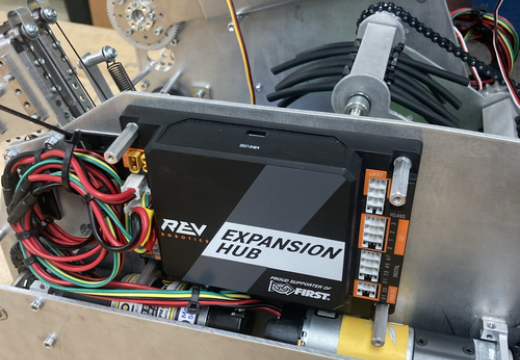
Software Used For Robot To Work
We use FTC Dashboard to help program our autonomous system faster and more efficiently. We do this by using odometry pods that help track the distance and development in our independent program. FTC Dashboard helps us speed up the process of finding exact (x,y,z) coordinates that the robot needs to go to. It allows us to same a lot of time and be more precise than just guessing and checking over and over again. In addition, we also use FTC Dashboard to tune our odometry pods; it allows us to determine factors like the speed and velocity of the three wheels. Overall, the FTC dashboard is an excellent way that our software team takes their ideas and innovative thinking to the next level.
